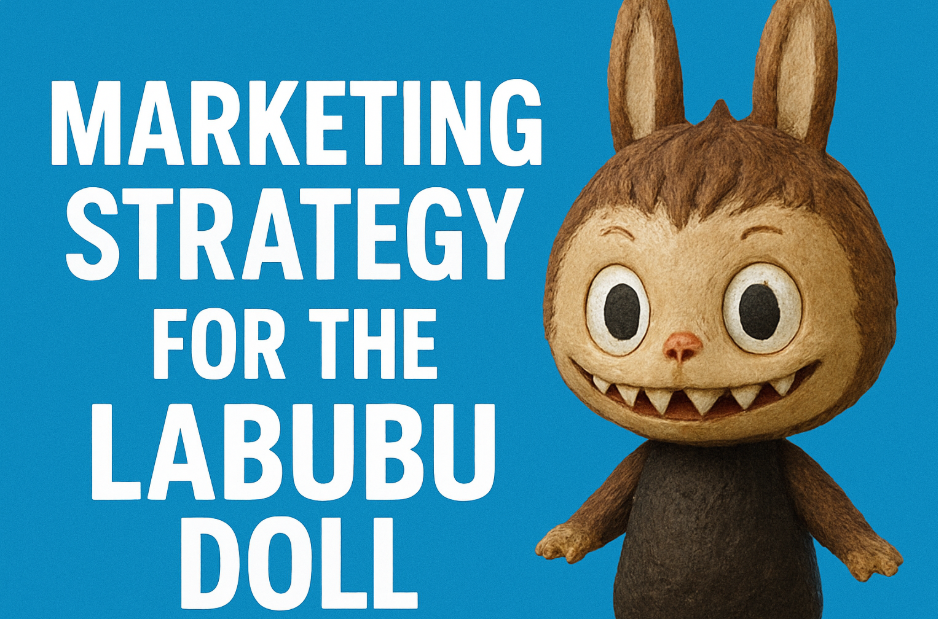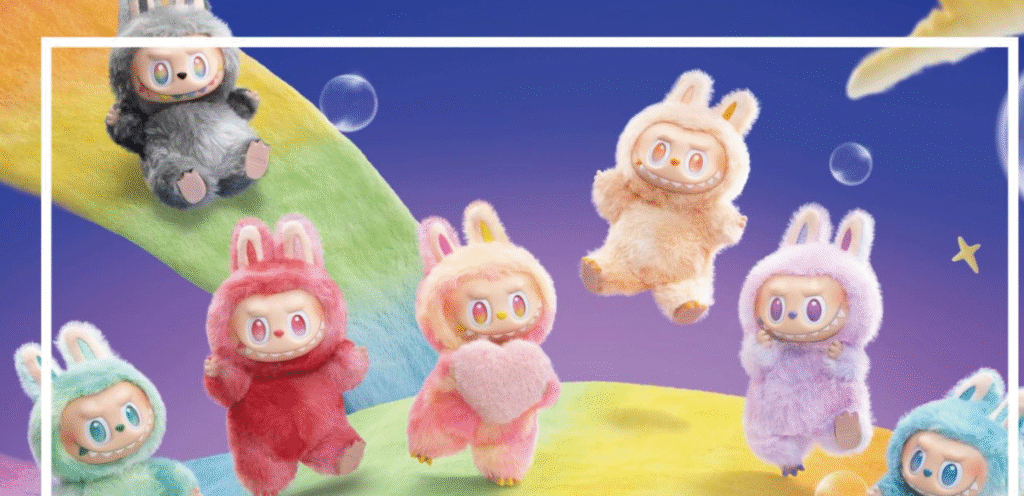Let’s explore the marketing strategy for the Labubu doll, the owner’s option. Besides this, we will discuss the celebrities, took part in it.
Labubu Doll, a company that the acclaimed Hong Kong artist Kasing Lung has developed into a selling place for street toys, has grown into a worldwide sensation through a carefully designed marketing plan. In just ten years, the exclusive designer toy collectible has now become one of the most sought-after art toys, due to a well-rounded strategy whose key pillars are the elements of scarcity, artistic appeal, and virality on the Internet.

In contrast to conventional toy marketing, the success of Labubu is based on the fact that the product was marketed as a limited edition of a piece of art and not a toy that is mass-produced through identical production lines, and this creates the perception of desirability beyond the collector markets. The strategic partnerships the brand has found with major artists and other streetwear brands have also assisted in raising its profile, and the well-calculated social media campaigns have made every new launch a social occasion. This highly developed marketing ecosystem is not only what has helped Labubu to maintain its pop culture but also keeps on multiplying demand, making artistic aspirations coupled with branding skills generate lasting value in the modern collectibles market.
This article explores:
- The brand of Labubu – marketing strategy for the Labubu doll
- Some major marketing strategies that drove it into popularity
- The contribution of limited editions and collaborations
- The way social media and influencer culture created demand, and how the social media and influencer culture increased demandPositioning
1. Brand Positioning: Not a Doll, but an Art toy
In contrast with toy products mass-marketed, Labubu was being marketed as a high-end designer collectible, aimed to:
- Audiences buying art toys
- Streetwear enthusiasts
- The supporters of the underground pop culture
Aesthetic perspective of Kasing Lung:
- Labubu is a unique monster that has its own personality since it was introduced as one of the abominations of The Monsters.
- It was edgy and unconventional in its design and was not cute, mainstream by the standards of its design.
Key Insight:
Positioning Labubu as art, not a toy, actually created a cult following that was more than happy to pay art prices.
2. A lot of Rarity and Scarcity Marketing
1. Drops, not Assembly Lines:
- Maximum releases on Labubu releases were planned in such a way that the demand was cut.
- Others were as scarce as 100 pieces in the world and thus became overnight collector pieces.
2. The Chasing Culture:
Some of them (such as glow-in-the-dark or metal finish) were incredibly rare, boosting resale prices. Such an approach reflected the hype in sneaker culture, in which its scarcity determines its status.
Example:
The Labubu Spooky Series was sold out in minutes, and it was even resold more than 5 times the retail price
3. Brand Alliances & Partnering
High-Profile Collaborations:
- Medicom Toy (Japan) raised the status of Labubu as a designer toy.
- Uniqlo UT Collection -An extension of made- Labubu to the general masses.
- Pharrell Williams Work: The Girl Exhibition, a tribute to the world of high art and celebrity.
Artist Crossovers:
Labubu also enjoyed collaborations with KAWS, Futura, and other street artists who enlarged its sphere. These collaborations bolstered its image as an underground cool.
4. Community Hype is described as Social Media Collaborations
- The Power of Instagram and TikTok
- Video unboxing and custom repaints became viral.
- Hashtags, such as #LabubuCollector and #ToyPhotography, created a cult following.
- Influencer and celebrity endorsers
- Labubu dolls were spotted in Pharrell and G-Dragon, and other trend setters.
The hype was helped by the Toy reviewers on YouTube and their must-have lists.
Case Study:
A Labubu Tweet by Japanese pop culture critic @hypebeast_toys generated a 300 percent increase in Japanese population-related Google search terms.

5. Pop-Up Shops & Experiential Marketing
- Special Opening Ceremonies
- Incognito delivery in cities such as Tokyo, Hong Kong, and Los Angeles.
- Fans were camping over, generating the real-world buzz.
- Interactive Exhibitions
- Labubu was famous and got hype as a cultural icon by art galleries.
- The community loves to go to DIY customizing workshops.
7. Second Hand Market and Reselling Craze
Artificial Scarcity = High Requirement:
- The restricted inventory caused eBay and StockX to resell at high prices.
- Fear of missing out (FOMO) was the reason behind impulsive purchases.
Collector Psychology:
- Labubu was a brand name among toys.
- Other consumers considered it a substitute investment, such as rare sneakers or watches.
8. The Controversy as Marketing (The Debate on the Demonic)
- Drinking the Kool-Aid
- The aesthetics of Labubu, which is a bit creepy, sparked online debates.
- Articles like, Is Labubu evil? unconsciously increased the SEO traffic.
There is No Bad Publicity
The legend has increased its appeal.
The clicking is worth noting, even at the time of skeptics making- the curiosity was the selling point.

9. Brand Strategy of the Future of Labubu
The Future of Beyond Toys:
- Brand affiliates (apparel, accessories).
- Cartoon short films to further the lore.
Sustainability Concerns:
- Is it possible that the scarcity model is eternal?
- Will brand dilution happen through saturation?
Conclusion – marketing strategy for the Labubu doll
The key to the creative marketing strategy that broke records and made Labubu an outstanding success was a perfect use of scarcity and exclusivity in its marketing approach to establish an insatiable demand, along with the strategic collaborations with artists and brands of higher status that promoted Labubu as a collector’s item. The smart application of virality on social media turned the brand into a cultural phenomenon, marketed through unboxing and endorsement of influencers, reaching millions.
The controversy surrounding its edgy aesthetic even helped its favor as it had a certain interest-inspiring mystique attached to it that further pursued consumer wants. Together with a feeling of scarcity, team prestige, online buzz, and a controversial design, Labubu went beyond the niche of an art toy to become a worldwide phenomenon, demonstrating how innovative marketing can transform the concept of underground cool to mainstream popularity.
Final Lesson – marketing strategy for the Labubu doll
Traditional advertising does not survive in the contemporary market today, as compared to cultural relevance. Labubu was not selling a product only; they were selling life, community, and artwork.
Collaborations


